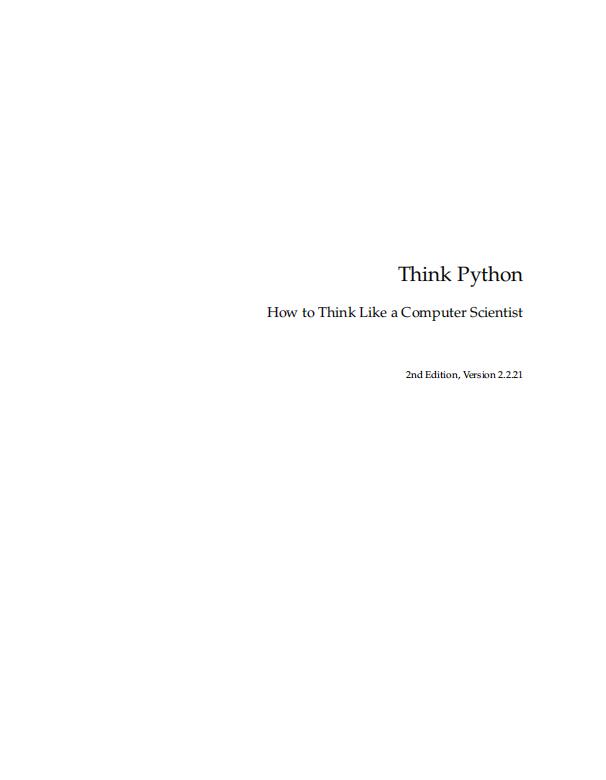think python 第二版 PDF 下載

Think Python
How to Think Like a Computer Scientist
2nd Edition, Version 2.2.21
The strange history of this book
In January 1999 I was preparing to teach an introductory programming class in Java. I had
taught it three times and I was getting frustrated. The failure rate in the class was too high
and, even for students who succeeded, the overall level of achievement was too low.
One of the problems I saw was the books. They were too big, with too much unnecessary
detail about Java, and not enough high-level guidance about how to program. And they all
suffered from the trap door effect: they would start out easy, proceed gradually, and then
somewhere around Chapter 5 the bottom would fall out. The students would get too much
new material, too fast, and I would spend the rest of the semester picking up the pieces.
Two weeks before the first day of classes, I decided to write my own book. My goals were:
• Keep it short. It is better for students to read 10 pages than not read 50 pages.
• Be careful with vocabulary. I tried to minimize jargon and define each term at first
use.
• Build gradually. To avoid trap doors, I took the most difficult topics and split them
into a series of small steps.
• Focus on programming, not the programming language. I included the minimum
useful subset of Java and left out the rest.
I needed a title, so on a whim I chose How to Think Like a Computer Scientist.
My first version was rough, but it worked. Students did the reading, and they understood
enough that I could spend class time on the hard topics, the interesting topics and (most
important) letting the students practice.
I released the book under the GNU Free Documentation License, which allows users to
copy, modify, and distribute the book.
What happened next is the cool part. Jeff Elkner, a high school teacher in Virginia, adopted
my book and translated it into Python. He sent me a copy of his translation, and I had the
unusual experience of learning Python by reading my own book. As Green Tea Press, I
published the first Python version in 2001.
In 2003 I started teaching at Olin College and I got to teach Python for the first time. The
contrast with Java was striking. Students struggled less, learned more, worked on more

